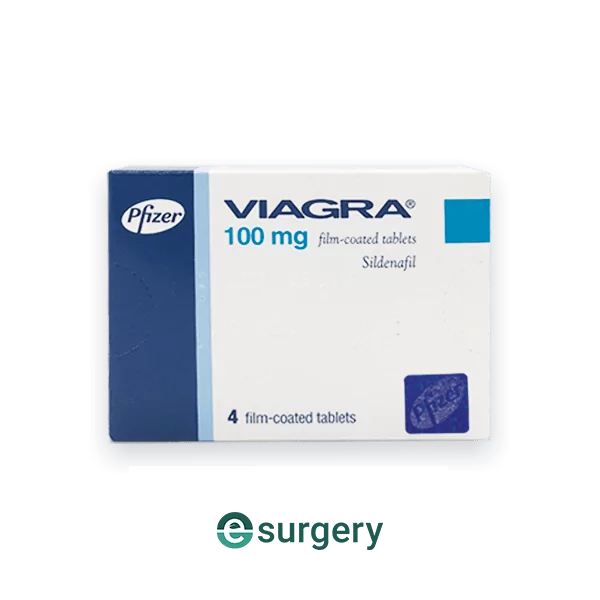
For most people, the idea of sexual dysfunction has a clear definition. It is when someone cannot experience an orgasm or ejaculate during sex.
What many people don’t know, however, is that there are different types of sexual dysfunction – female sexual dysfunction (FSD) being one of them. What does this mean? What causes it? What can be done to fix it? Let’s find out!
What Is Female Sexual Dysfunction (FSD)?
One of the most common problems women face is trouble with their sex life. Almost half of all women report persistent sexual difficulties, including little or no interest in sex, difficulty reaching orgasm, and/or pain during intercourse.
1 in 3 young and middle-aged women suffer from a sexual problem, while older ladies have 2 times more chances than most other groups to experience difficulties. [1]

Female sexual dysfunction falls under the umbrella term “sexual health problems.” FSD affects women who have experienced at least three months without any interest in sex and/or four months without achieving orgasm with sex. This disorder impacts every aspect of life, including relationships and mental health.
What Are The Symptoms Of FSD?
There are many types and symptoms that vary depending on the type you’re experiencing, but there may also be causes that don’t have anything to do with your hormones or desire for sex- including relationship difficulties as well as other personal stressors in one’s life such as depression/anxiety attacks which could lead them to struggle emotionally before things ever get physical between partners due to lack of interest from partner(s). [1]
Symptoms of FSD may include:
- A lack of sexual desire
- Sexual arousal disorder
- Orgasmic disorder
- Sexual pain disorder
What Are The Causes Of FSD?
Anyone who has experienced hormonal changes such as those that occur after giving birth or during menopause might experience sexual problems. Major illnesses, like cancer and heart disease, can also contribute to FSD.
Physical Causes
The most common physical causes for FSD include:
• Cancer, diabetes, and heart disease. These medical conditions can lead to various other complications in some individuals, including problems with nerve or nervous system disorders.
• Medication and drug use, including alcohol, antidepressants, antihistamines, blood pressure medications, chemotherapy, and antiseizure medications. [1]
• Vaginal problems, Infections, and congenital structural disabilities, as well as surgical scarring.
Hormonal Causes
Hormonal changes after giving birth, during breastfeeding, and menopause are all contributors to FSD. When hormone levels fall after menopause, women may experience a change in their attitudes towards sex. [1]
Here are the following effects that can cause FSD:
• Decreased blood flow to the pelvis and genitals may interfere with genital sensation.
• The walls of the vagina can weaken with time, which may make sex painful or uncomfortable.
• A lack of lube and vaginal dryness can make sex uncomfortable for both partners.

Psychological Causes
There are a variety of psychological reasons why someone might have FSD. Although there are many potential causes, the most common include:
- Women are often concerned about the outcome of their sexual encounters. They may be worried that they will become pregnant, contract an STD, and expect to have an orgasm.
- Attitudes, norms, and beliefs in the community.
- Such difficulties as infertility, menopause, surgery or other factors that contribute to a feeling of sexual and feminine loss might have a damaging effect on your self-esteem.
- Emotional or mental health issues such as anxiety, stress, or guilt. [2]
- Bad previous relationship issues, such as conflict, anger, or trust issues.
Where Can I Get Treatment For FSD?
Even ignoring the fact that sexual dysfunction can sometimes be a problem for those who suffer from it, if you don’t find yourself bothered by your lack of desire or ability to perform sexually, then there’s really no need for treatment.
Women often struggle with sexual dysfunction, but you need to know what symptoms can be common or not. You should also communicate any concerns and understand the normal response to choose an appropriate treatment plan that will best suit your needs!
In order to get the most out of treatment, it’s important that you address all aspects of your life. Women with sexual concerns often benefit from a combined approach that focuses on medical as well as relationship and emotional issues.
There are a few treatments available on E-Surgery regarding Women’s Health.
If you’re suffering from FSD, please consult your doctor before starting any new medication.
Does Viagra Work To Treat FSD
There is a well-known drug for treating erectile dysfunction in men called Viagra, but what about its effects on women? It’s important to point out that this medicine isn’t suitable and can only be used by males.
Although there isn’t enough research to back up these claims, anecdotal evidence suggests that Viagra can increase sexual pleasure in women. It’s thought that this drug works by increasing blood flow and oxygen concentrations near the female genital area, which may lead to greater lubrication during sex and aid with orgasmic contraction speed and intensity for both partners involved. [3] We would not recommend for females to take Viagra, as there is not enough evidence to prove this is safe.
Conclusion
Female Sexual Dysfunction (FSD) is a general term for any sexual disorder in women. FSD can be caused by physical, hormonal, or psychological factors.
One of the most common types of FSD is called hypoactive sexual desire disorder (HSDD). HSDD manifests as an absence of sex drive, and it may also cause pain during intercourse. There are several treatments available to help with your condition. If you’re looking for more information on female health treatment options, please visit E-Surgery’s website. We specialize in providing comprehensive healthcare services online, so you don’t have to leave home.
Sources
1. Female sexual problems (NHS UK Statistics)
3. Women taking the “blue pill” (sildenafil citrate): such a big deal? (NCBI)









